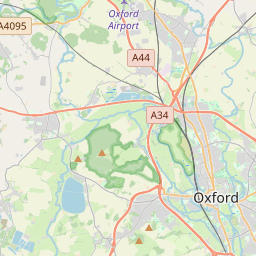Inscription
Hythe Bridge Street dates back to at least 1233 when it provided access across the Castle Mill Stream, a branch of the river Thames, to two of Oxford's great abbeys. Sadly, there are now only a few traces of Osney Abbey (founded 1129) and Rewley Abbey (founded 1280) both - were dissolved by King Henry VIII in the 1530s.
The name 'hythe' is Old English for wharf, and it recalls that Thames barges were once unloaded in Upper Fisher Row (to your left). The river was a vital trade artery for centuries and the arrival of the Oxford Canal in 1790 joined the Thames to the Midlands and brought rapid industrial growth to the city.
Bringing in the goods
A wharf north of Hythe Bridge is first mentioned in 1282 and boatloads of hay, wood, stone and slate from the upper Thames would have been unloaded
here and carted into the city. The Oxford Canal brought coal and other goods from the Midlands. It passed beneath Hythe Bridge Street just beyond the bridge and terminated at wharves in Worcester Street and New Road.
The coming of the railways reduced river and canal traffic, and by the late 19th century houses had been built on the site of the wharf in Upper Fisher Row. In 1937 the car manufacturer, Lord Nuffield, purchased the canal basin site to build a new
Oxford college. Nuffield
College now stands where the New Road wharf used to be,
and Worcester Street car park occupies the remainder of the canal basin.
A towpath to explore
A lively campaign saved the Oxford Canal from closure in the 1950s, and the towpath now provides endless opportunities for exploration (join it just over the bridge, on the left). Beyond a brick weir, you pass the site of the Boatmen's Floating Chapel (1839) which provided weekly religious services and schooling for boatmen's children.
It was replaced in 1869 by a building now used as the Bangkok House restaurant. Along the towpath you will find little gardens flourishing beside the houseboats while billowing horse chestnut trees on the right mark the boundary of Worcester College's gardens.
Crowded Waters
Castle Mill Stream runs below this bridge. Beside it is Fisher Row. The stream was once a highway for industry. All types of water workers - fishermen, boatmen and bargemen - lived here alongside carpenters and tanners. The stream fed Castle Mill where corn was ground for a fee.
( photo captions )
- Boatmen's Floating Chapel on the Oxford Canal. The Chapel provided a Sunday service for what the Bishop of Oxford described as 'that neglected and too often depraved class, the boatmen on your canals'.
- Looking across the abandoned canal to a warehouse, 1955. The site is being cleared to make way for the construction of Nuffield College.
Details
| HM Number | HM2ETH |
|---|---|
| Tags | |
| Marker Condition | No reports yet |
| Date Added | Friday, March 8th, 2019 at 4:01pm PST -08:00 |
Pictures
Locationbig map






| UTM (WGS84 Datum) | 30U E 619747 N 5735037 |
|---|---|
| Decimal Degrees | 51.75341667, -1.26515000 |
| Degrees and Decimal Minutes | N 51° 45.205', W 1° 15.909' |
| Degrees, Minutes and Seconds | 51° 45' 12.3" N, 1° 15' 54.54" W |
| Driving Directions | Google Maps |
| Which side of the road? | Marker is on the right when traveling East |
| Closest Postal Address | At or near , , |
| Alternative Maps | Google Maps, MapQuest, Bing Maps, Yahoo Maps, MSR Maps, OpenCycleMap, MyTopo Maps, OpenStreetMap |
Is this marker missing? Are the coordinates wrong? Do you have additional information that you would like to share with us? If so, check in.
Maintenance Issues
- What country is the marker located in?
- Is this marker part of a series?
- What historical period does the marker represent?
- What historical place does the marker represent?
- What type of marker is it?
- What class is the marker?
- What style is the marker?
- Does the marker have a number?
- What year was the marker erected?
- Who or what organization placed the marker?
- This marker needs at least one picture.
- Can this marker be seen from the road?
- Is the marker in the median?

Comments 0 comments